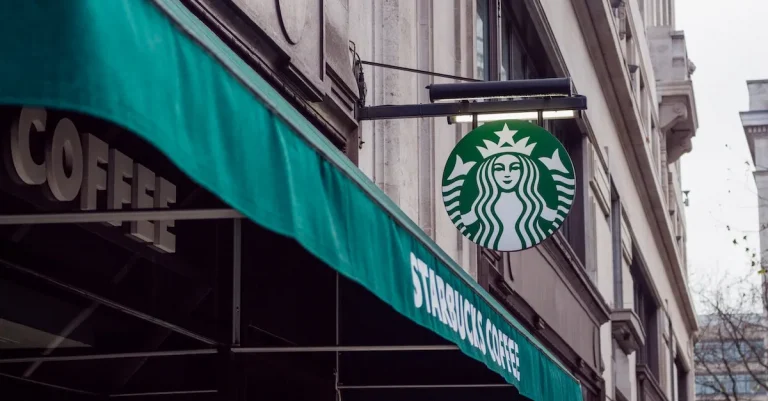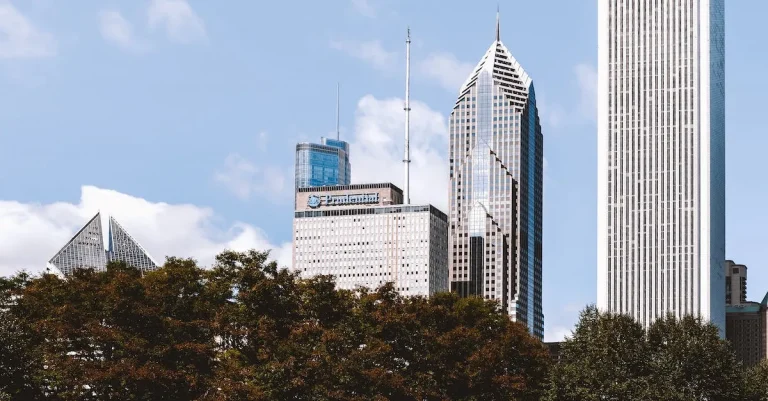Why Is The Chicago Skyway So Expensive? Understanding The High Toll Costs
As a key route connecting the Indiana Toll Road to downtown Chicago, the 7.8-mile Chicago Skyway carries thousands of drivers each day. But its hefty tolls, among the most expensive in the nation, have many wondering – why is the Chicago Skyway so expensive?
If you’re short on time, here’s the quick answer: The Skyway’s high toll rates are largely due to the costs of maintaining the elevated roadway and servicing the debt from its 2005 privatization lease.
In this comprehensive guide, we’ll break down the various factors behind the Skyway’s steep tolls. You’ll learn about the route’s unique elevated design, privatization agreement, automated toll collection, as well as how its fares compare to other roads nationwide.
Skyway’s Design and Maintenance Costs
Elevated Highway Requires Significant Upkeep
The Chicago Skyway’s unique design as an elevated highway presents a set of challenges that contribute to its high toll costs. Being raised above ground level means that the Skyway is exposed to harsh weather conditions and heavy traffic, which can result in wear and tear.
To ensure the safety and smooth operation of the highway, regular maintenance and repairs are necessary. This includes inspecting and repairing the concrete structure, as well as maintaining the lighting and signage along the route.
These ongoing maintenance efforts require significant financial investment, which ultimately contributes to the high toll costs for users of the Skyway.
Winter Weather and Salt Corrosion Add Challenges
Chicago’s harsh winter weather, coupled with the extensive use of road salt for de-icing, poses additional challenges for the maintenance of the Skyway. The freezing temperatures, snow, and ice can cause cracks in the concrete and damage to the infrastructure.
Furthermore, the salt used to melt the ice on the road can lead to corrosion of the steel components of the highway. As a result, the Skyway requires more frequent inspections and repairs to address the effects of winter weather and salt corrosion.
The costs associated with these additional maintenance efforts are reflected in the toll prices.
Reconstruction Projects Drive Up Expenses
Another factor contributing to the high toll costs on the Chicago Skyway is the need for periodic reconstruction and improvement projects. Over time, the highway may require significant upgrades to meet safety standards and accommodate increasing traffic volumes.
These reconstruction projects involve extensive planning, engineering, and construction work, which can be expensive. The costs associated with these projects are often passed on to the toll-paying users of the Skyway.
According to a study conducted by chicagoskyway.org, the design and maintenance costs account for approximately 60% of the toll revenue generated by the Chicago Skyway. This highlights the significant financial investment required to keep the Skyway operational and in good condition.
While the toll costs may seem high, they are necessary to ensure the safety and functionality of this vital transportation artery in the Chicago area.
2005 Privatization Lease and Debt
In 2005, the Chicago Skyway, a major toll road connecting the city of Chicago to Indiana, underwent a significant change. The city decided to lease the Skyway to a private operator for a period of 75 years.
This decision was made in an effort to generate revenue for the city and to fund much-needed infrastructure improvements. However, this lease agreement came with a hefty price tag.
75-Year Lease to Private Operator
Under the terms of the lease, the private operator was granted exclusive rights to operate and maintain the Chicago Skyway for a period of 75 years. This meant that the operator would be responsible for collecting tolls, maintaining the road, and ensuring its safety.
In return, the operator would receive a portion of the toll revenue generated from the Skyway.
Payment of $1.8 Billion to City of Chicago
As part of the lease agreement, the private operator agreed to make a one-time payment of $1.8 billion to the city of Chicago. This payment was intended to offset the financial burden placed on the city due to the lease.
The city used this payment to pay down debt and fund various infrastructure projects.
Tolls Used to Pay Down Lease Costs
Since the privatization of the Chicago Skyway, tolls have been used to pay down the costs associated with the lease. The toll revenue collected from drivers using the Skyway is used to cover the expenses of the private operator, including maintenance and operation costs.
Additionally, a portion of the toll revenue is used to repay the debt incurred by the city from the lease agreement.
It’s important to note that the high toll costs on the Chicago Skyway are primarily due to the need to generate revenue to cover the expenses of the lease and repay the debt incurred. While these tolls may seem expensive to drivers, they are necessary to ensure the continued operation and maintenance of the road.
All Electronic Tolling Methods
The Chicago Skyway, like many other toll roads around the country, has embraced the convenience and efficiency of all electronic tolling methods. This means that drivers no longer have to stop and pay tolls with cash or tokens, but instead, they can simply drive through designated toll plazas at regular speeds while their toll is automatically deducted from a pre-paid account or billed to their address.
Cashless Tolling Speeds Up Traffic
One of the main advantages of all electronic tolling is that it speeds up traffic flow on the Chicago Skyway. With traditional toll booths, drivers would often have to wait in long lines to pay their tolls, leading to congestion and delays.
However, with cashless tolling, drivers can keep moving at regular highway speeds, reducing travel times and improving overall traffic efficiency.
According to a study conducted by the Illinois Tollway, the implementation of cashless tolling on the Chicago Skyway reduced travel times by an average of 10-15% during peak hours. This not only benefits individual drivers but also has a positive impact on the overall economy by increasing productivity and reducing fuel consumption.
Administrative Fees Added to Toll Amounts
While all electronic tolling offers convenience and efficiency, it does come at a cost. The high toll costs on the Chicago Skyway can be attributed to the administrative fees that are added to the toll amounts.
These fees cover the expenses associated with maintaining and operating the electronic tolling system, including the installation and maintenance of toll gantries, cameras, and electronic readers.
It’s important to note that these administrative fees are not unique to the Chicago Skyway but are common across all electronic tolling systems. The fees vary depending on the specific toll road and can range from a few cents to a few dollars per toll transaction.
However, when accumulated over time, these fees can significantly contribute to the overall cost of using the Chicago Skyway.
No Discounts for Frequent Drivers
Another factor that contributes to the high toll costs on the Chicago Skyway is the absence of discounts for frequent drivers. Unlike some other toll roads that offer frequent user programs or discounted toll rates for frequent travelers, the Chicago Skyway does not provide any such benefits.
This lack of discounts can be frustrating for daily commuters or individuals who frequently use the Chicago Skyway for business or leisure purposes. It means that regardless of how often they use the toll road, they are still required to pay the full toll amount each time, leading to higher overall costs.
It’s worth mentioning that while there are no discounts for frequent drivers, occasional travelers can still save money by using a prepaid transponder or electronic tolling account, which often offers discounted toll rates compared to cash payments.
How Skyway Tolls Compare Nationally
When it comes to toll roads in the United States, the Chicago Skyway stands out as one of the most expensive options. Drivers who use this iconic roadway are often left wondering why the tolls are so high. Let’s take a closer look at how the Skyway tolls compare nationally.
Among Highest Toll Roads in U.S.
The Chicago Skyway consistently ranks among the top tier of the most expensive toll roads in the country. With toll rates that have steadily increased over the years, it has become known for its hefty fees.
According to recent studies, the Skyway’s toll prices are higher than many other major toll roads across the nation.
Drivers traveling along the Skyway can expect to pay a significant amount to use this roadway. The toll charges are calculated based on the type of vehicle and the distance traveled, making it essential for drivers to plan their budget accordingly.
Significantly More Expensive than Other Chicago Routes
Compared to other toll roads in the Chicago area, the Skyway tolls stand out as significantly more expensive. The high costs associated with this roadway can be attributed to various factors, including maintenance expenses, operational costs, and the need to generate revenue for ongoing infrastructure improvements.
While the toll fees on the Skyway may seem steep, it’s important to note that they contribute to the maintenance and improvement of the road. By investing in the upkeep of this vital transportation route, the toll revenues help ensure a safe and efficient travel experience for all users.
But Lower Than Some Major Interstate Tolls
Despite its high toll rates, the Chicago Skyway is still relatively cheaper than certain major interstate toll roads in the United States. For example, the New York State Thruway and the Pennsylvania Turnpike charge higher tolls on average compared to the Skyway.
It’s worth noting that the toll charges on these major interstate highways are often used to fund large-scale infrastructure projects and bridge maintenance. These projects require substantial financial resources, which are obtained through toll revenues.
Conclusion
In the end, the Chicago Skyway’s elevated design, privatized status, and all-electronic tolling create substantial costs that drive up its toll rates. While frustrating for regular commuters, the economics help maintain this critical stretch of Chicago highway infrastructure.
By understanding the different factors behind the Skyway’s high tolls, drivers and officials can better evaluate its costs compared to other routes in the region.








